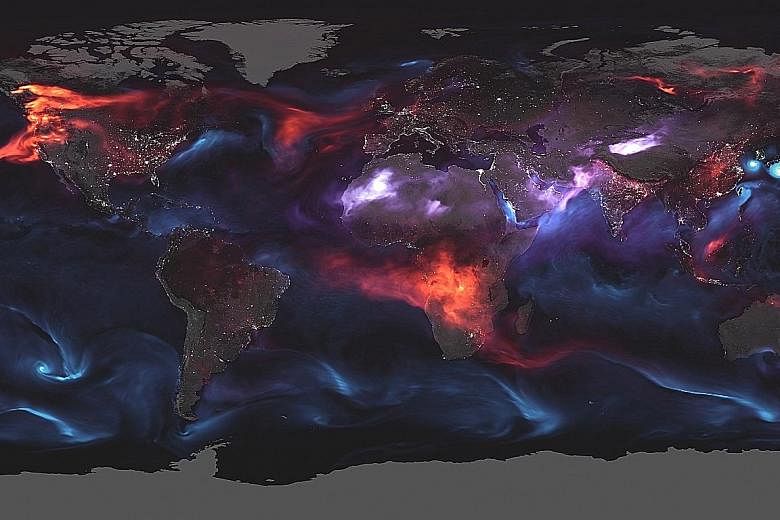Take a deep breath - and you will almost certainly inhale millions of solid particles and liquid droplets. These ubiquitous specks of matter are known as aerosols, and they can be found in the air over oceans, deserts, mountains, forests, ice and every ecosystem in between. If you have ever watched smoke billowing from a wildfire or ash erupting from a volcano, you have seen aerosols. Nasa's satellites "see" them as well, though they offer a different perspective from hundreds of kilometres above Earth. A version of a Nasa model called the Goddard Earth Observing System Forward Processing (Geos FP) offers a similarly expansive view of the mishmash of particles that swirl through the atmosphere. The visualisation highlights Geos FP model output for aerosols on Aug 23. On that day, huge plumes of smoke drifted over North America and Africa, three different tropical cyclones churned in the Pacific Ocean, and large clouds of dust blew over deserts in Africa and Asia. The storms are visible within giant swirls of sea salt aerosol (blue), which winds loft into the air as part of sea spray. Black carbon particles (red) are among the particles emitted by fires; vehicle and factory emissions are another common source. Particles the model classified as dust are shown in purple. The visualisation includes a layer of night light data collected by the day-night band of the Visible Infrared Imaging Radiometer Suite on Suomi NPP that shows the locations of towns and cities.
Beautiful Science

Join ST's Telegram channel and get the latest breaking news delivered to you.
A version of this article appeared in the print edition of The Straits Times on October 18, 2018, with the headline Beautiful Science. Subscribe
